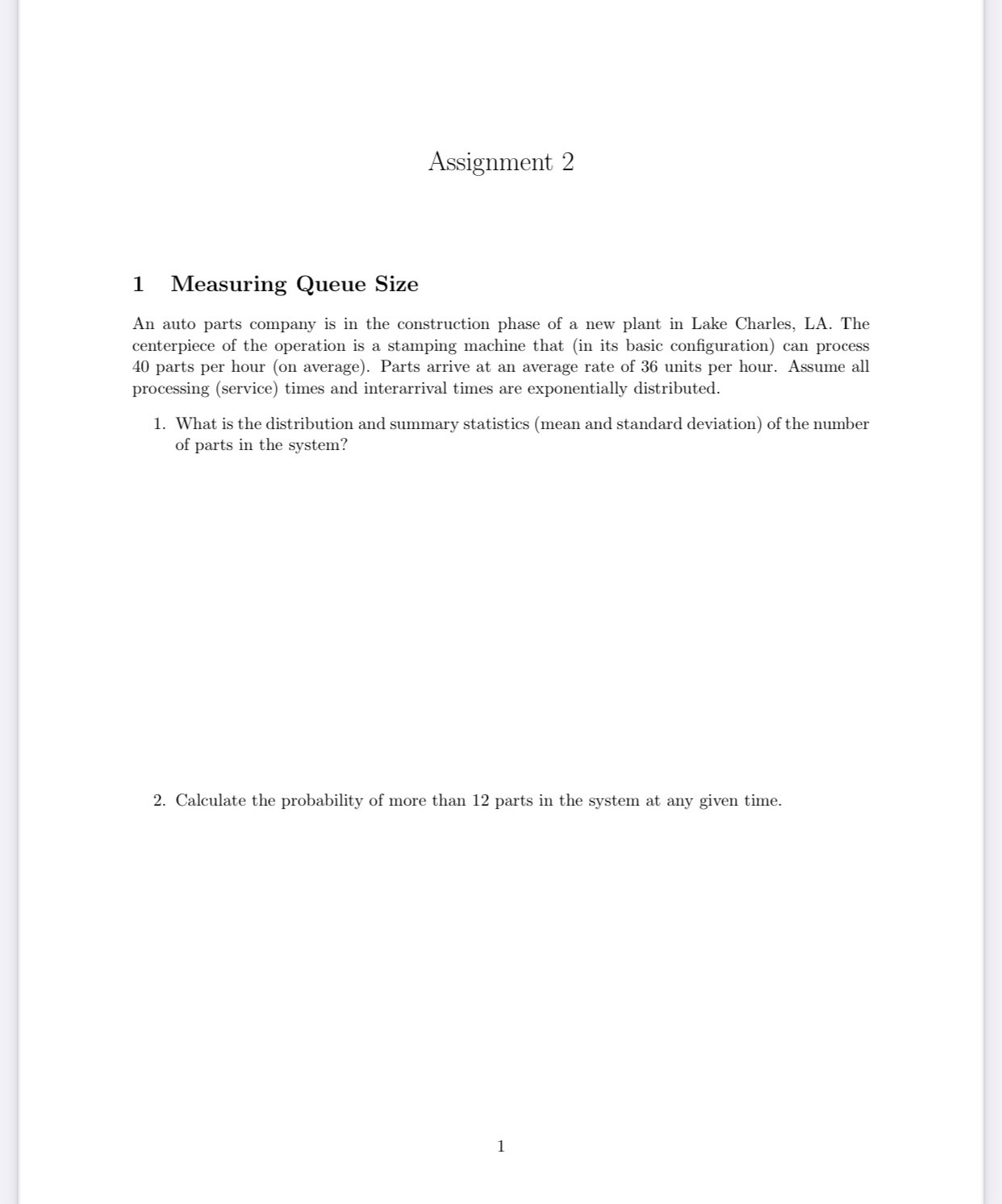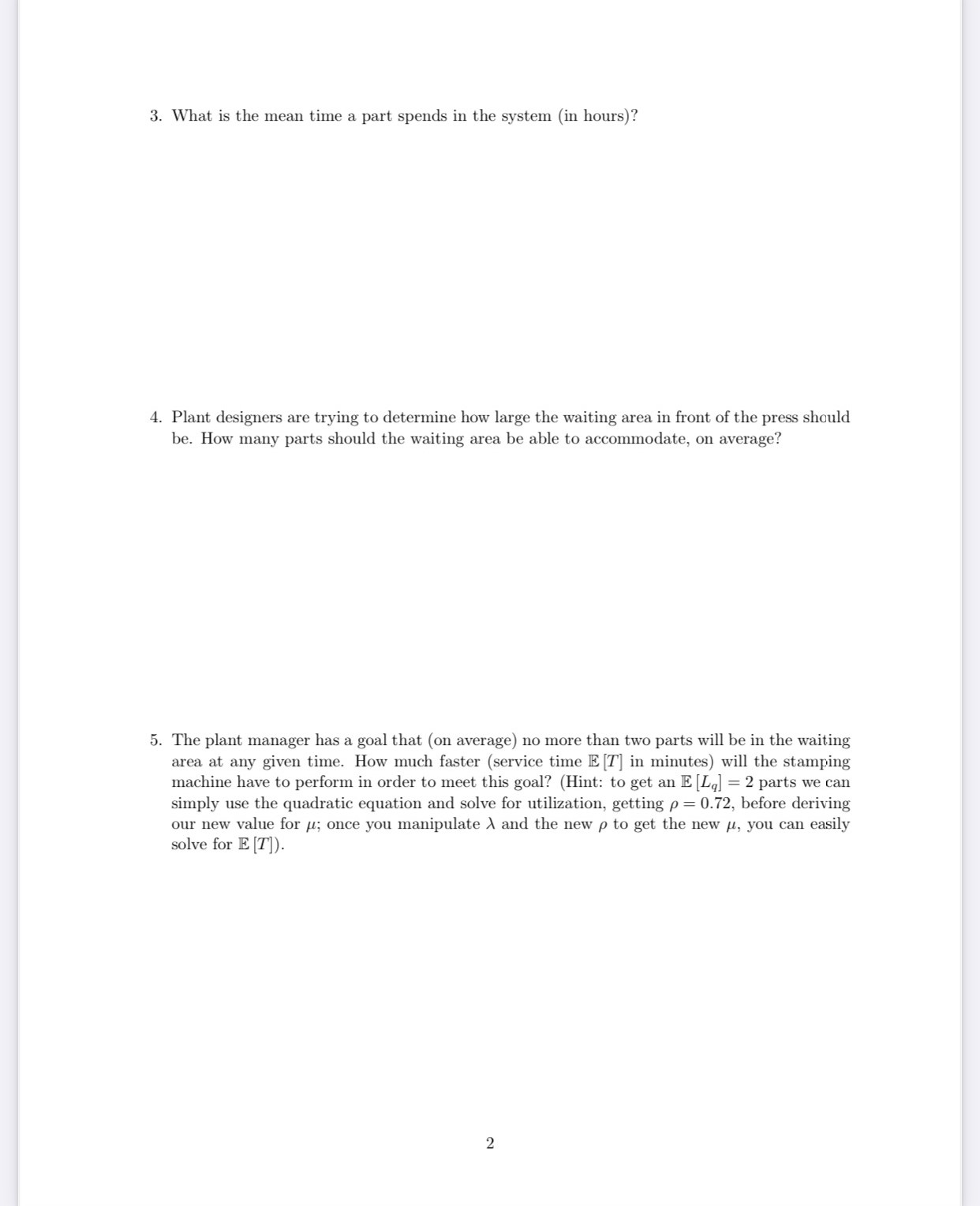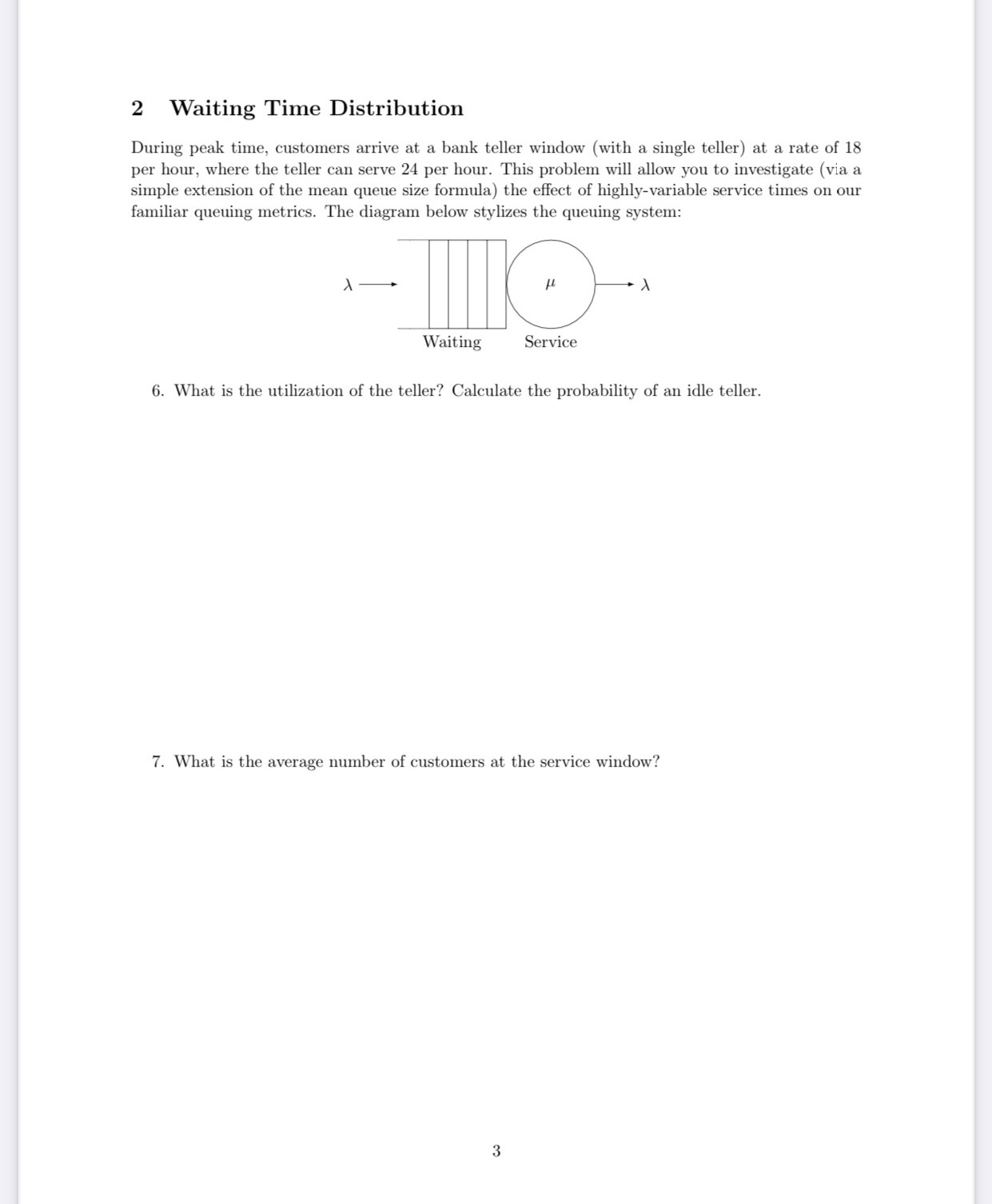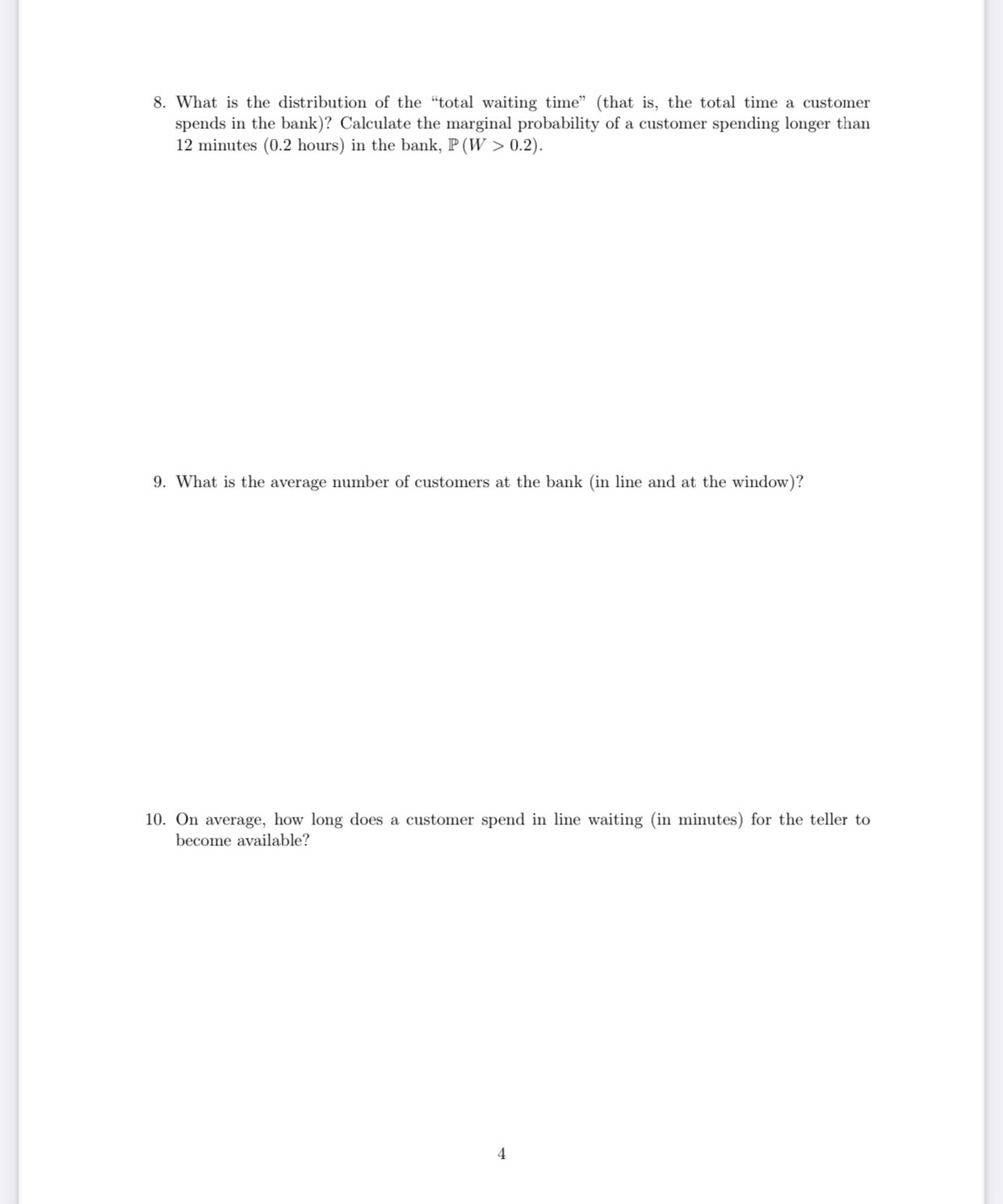Answered step by step
Verified Expert Solution
Question
1 Approved Answer
Assignment 2 1 Measuring Queue Size An auto parts company is in the construction phase of a new plant in Lake Charles, LA. The




Assignment 2 1 Measuring Queue Size An auto parts company is in the construction phase of a new plant in Lake Charles, LA. The centerpiece of the operation is a stamping machine that (in its basic configuration) can process 40 parts per hour (on average). Parts arrive at an average rate of 36 units per hour. Assume all processing (service) times and interarrival times are exponentially distributed. 1. What is the distribution and summary statistics (mean and standard deviation) of the number of parts in the system? 2. Calculate the probability of more than 12 parts in the system at any given time. 1 3. What is the mean time a part spends in the system (in hours)? 4. Plant designers are trying to determine how large the waiting area in front of the press should be. How many parts should the waiting area be able to accommodate, on average? 5. The plant manager has a goal that (on average) no more than two parts will be in the waiting area at any given time. How much faster (service time E [T] in minutes) will the stamping machine have to perform in order to meet this goal? (Hint: to get an E [L] = 2 parts we can simply use the quadratic equation and solve for utilization, getting p = 0.72, before deriving our new value for ; once you manipulate A and the new p to get the new , you can easily solve for E [T]). 2 2 Waiting Time Distribution During peak time, customers arrive at a bank teller window (with a single teller) at a rate of 18 per hour, where the teller can serve 24 per hour. This problem will allow you to investigate (via a simple extension of the mean queue size formula) the effect of highly-variable service times on our familiar queuing metrics. The diagram below stylizes the queuing system: Waiting Service 6. What is the utilization of the teller? Calculate the probability of an idle teller. 7. What is the average number of customers at the service window? 3 8. What is the distribution of the "total waiting time" (that is, the total time a customer spends in the bank)? Calculate the marginal probability of a customer spending longer than 12 minutes (0.2 hours) in the bank, P (W > 0.2). 9. What is the average number of customers at the bank (in line and at the window)? 10. On average, how long does a customer spend in line waiting (in minutes) for the teller to become available? 4
Step by Step Solution
There are 3 Steps involved in it
Step: 1

Get Instant Access to Expert-Tailored Solutions
See step-by-step solutions with expert insights and AI powered tools for academic success
Step: 2

Step: 3

Ace Your Homework with AI
Get the answers you need in no time with our AI-driven, step-by-step assistance
Get Started


